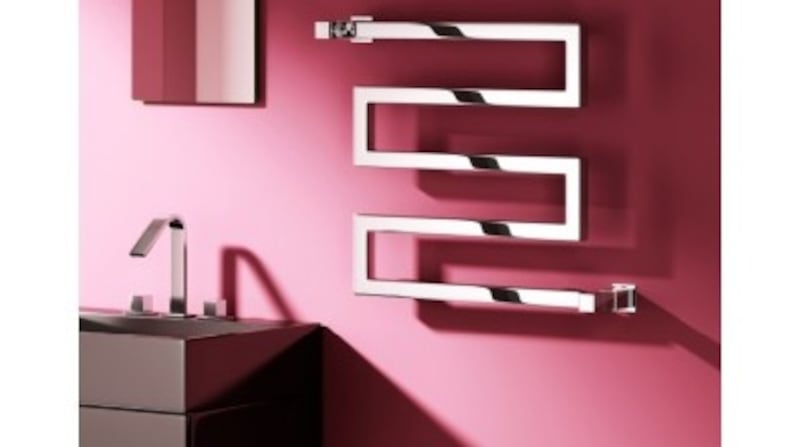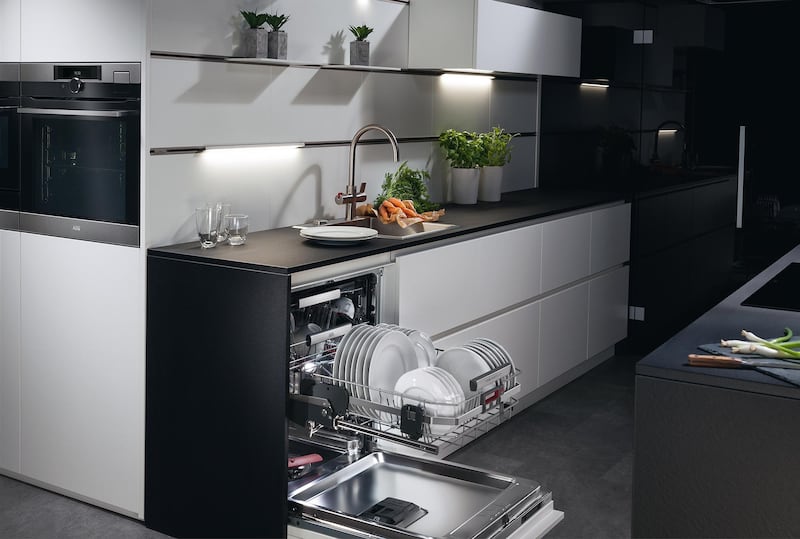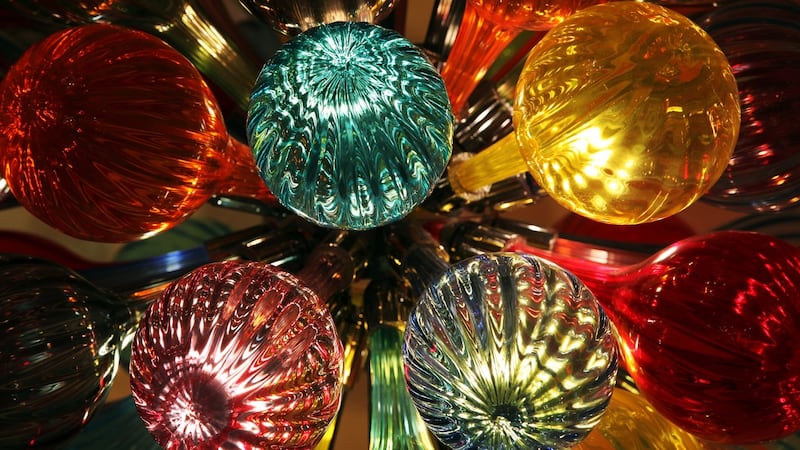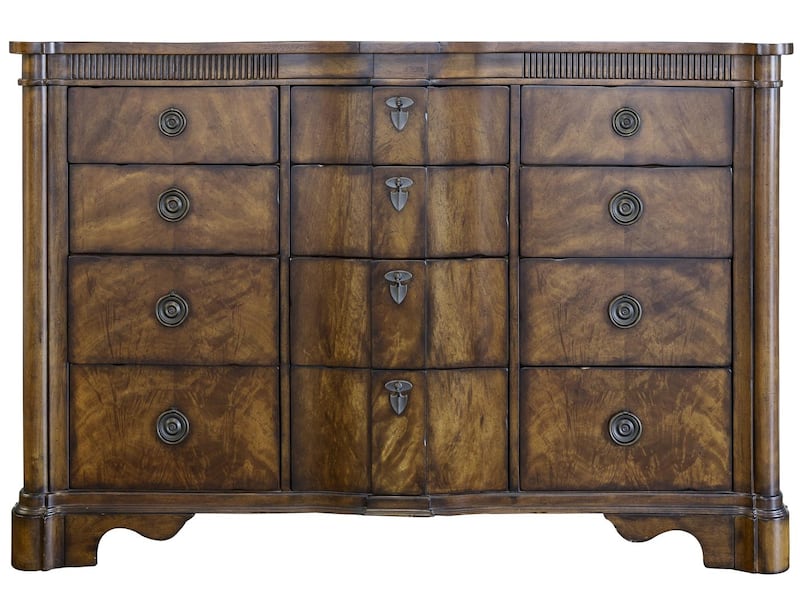Kitting out a home can be a pricey endeavour, and some spends can seem more extravagant than others. However, it turns out that many items could be worth spending a little extra on, and might even save you a few quid in the long run.
1. A feature radiator or two

Gone are the days when radiators took up a whole wall. In fact, according to Ian Wasson of the Radiator Shop (theradiatorshop.ie), they can become a feature. "Years ago there was only one choice and standard size of radiator, but there have been a lot of developments since then," he says. "Now they can be something that makes a room. People are much more discerning about the style they want, and how much space they want to give to a radiator."
Wasson notes that a stainless steel or aluminum radiator may cost more than a mild steel radiator, but boasts much greater longevity, not least compared to chrome-plated ones. “In terms of corrosion and rust, the stainless steel radiators really do last the distance, and have a warranty of around 25 years,” he says.
2. A washing machine
Bargains abound for pocket-friendly washing machines, but James O'Shea, product/marketing manager for major home appliances at Harvey Norman, suggests looking beyond the most affordable model.
“Machines start at €179 and can last for five or six years, but they’re not going to give you the great results,” he advises. “It’s good to look at the value of clothes you put into a machine - some people put €300 worth in with every load.
“You don’t have to buy the most expensive one, but the AEG 9000 series machine has great technology. It can present the results of a 60-degree wash with a 30-degree programme, and weigh each load and determines the right detergent amount. Over its lifespan it’s a piece that’s likely to pay you back.”
Another thing to keep an eye out for when buying is decibel range: a top of the range model can be around 40 decibels, compared to 70 for one at entry-price. “Think a light rain compared to a full shower,” says O’Shea.
3. A dishwasher

According to O’Shea, new models have bottom trays that elevate to the height of the top tray, eliminating the need to bend down; “It’s a real bonus for elderly buyers,” he says. Another new feature worth shelling out for is a second or third arm on the circular washing feature, which will get to all corners of the dishwasher. As to how to improve longevity: “A lot of people leave food on plates, but it’s really important to take food off dishes before putting them in the dishwasher. Clean the tray at the bottom regularly, and run a cleaning programme, without dishes, every so often,” O’Shea advises
4. A sofa
There’s little way around it; to ensure a sofa that can take plenty of lounging, customers need to get bums on seats. A lot.
As to why a sofa is a key investment, Eamonn Harringon, sofa buyer at Harvey Norman, notes: “It’s the showpiece of the house when you think of it, as visitors will always see it. Other than your mattress, it’s the one other space where you spend most of your time.” The ideal sofa is a holy trinity of look, durability and comfort, but as Harrington notes, comfort is the only true consideration.
“There’s no point in having something absolutely beautiful if it doesn’t pass the comfort test,” he notes. “A very plush fabric or soft leather might mean spending a few extra euro but it’s a long-term investment.” A few maintenance measures will ensure its lifespan: “Clean leather monthly, and plump cushions regularly to keep the fibres alive.”
5. A key piece of lighting

According to interior designer Caroline Flannery, carefully considered lighting can set the tone of a room, “eliminating the need to invest too heavily in additional furniture items”.
"For investment lighting, my advice is always buy what you love and always, always buy the absolute best quality you can afford, even if it means scouring online for hours or visiting auction houses and fairs," she says. As to what pieces to keep an eye out for? "The iconic Arco lamp by The Castigloini Brothers, for instance, will make a statement and is still as relevant today as it was in the 1960s when it was first designed, as is any fitting by Poul Henningsen. The addition of a beautifully crafted Murano glass chandelier or an original fitting from the dazzling 1920s period can add an extra dimension to even the most contemporary design."
6. Antique furniture

Oak, in particular bookcases and dressers, appears to be a wise investment: “Due to the current lack of interest in brown furniture, there are some wonderful bargains to be had at the moment,” says Flannery.
Rodi Keighery of City Auction Rooms, Waterford, agrees: “The quality of older stuff is far superior to modern items. Oak is most durable, as are mahogany, rosewood and walnut. The most important thing to look out for is the maker’s name and stamp on the door or drawer. These days, you can find a good mahogany chest of drawers for €200-€300, while a new one of far poorer quality can cost €700.”
Zoe Carney, owner of Velveteen Rabbit antique store in Dublin, says: “I would say buy something in its best condition, restoration can be very expensive. Where possible, find out who designed it, or who the maker was, as knowing this piece of information is good for the resell value. In demand at the moment is European mid-century pieces, such as matching chairs and sideboards. Or any original furniture from the designer Charles Eames, like one of his classic chairs. I think mirrors are timeless and a great investment, especially gold gilt as they can fit perfectly into most interior spaces and never date or age.”
7. Soundproofing
It’s hard to quantify whether or not soundroofing will add value to a home, but according to Francis McKenna of soundproof specialists Buildtec, laying down a couple of thousand euro can add significantly to the quality of life for a house’s inhabitants.
“It improves speech transfer, television impact, and sounds of people stomping around upstairs,” he explains. “It can have a very tangible impact.” Expect to pay anything between €3000 and €8000 for a job well done: “There are two systems, you could build a stud wall and put insulation into the cavity between this and the existing wall, but you will lose space dimensions from your room,” McKenna says. “Another system adds soundproofing directly to your walls – it only takes up 50mm of space but the levels of soundproofing might not be quite as high.”
8. A fridge

According to Andrew Rudd, owner of Medley restaurant, the smartest spend he made while fitting his kitchen was a Fisher Paykel American-style fridge. “It has pull out drawers, so one can be a freezer and the other an ice machine,” he says. “It does so much for a fridge: it keeps fruit and vegetables fresh, unlike a lot of fridges. It can even keep herbs dry. If you want to chill a bottle of wine, it has ‘Active Smart’ technology that will chill it for the exact time needed. Other fridges break and can be difficult to clean, but not this one.”
While kitting out a kitchen, Rudd advises buyers to steer clear of integrated devices like coffee machines, which can break and be difficult to clean and service: “You’re honestly better off with a Nespresso machine,” he says.
9. A piece of art

Some up-and-coming names in Irish art, according to Frank O’Dea of Balla Ban Art Gallery, might well yield a return on investment: “Those worth investing in are Dunlin Street Artist, Solus, Maser, Fink and ADW,” he reveals. “Likewise urban art is growing and artists to look out for are Duda and Morgan. Newcomers Shane Berkley and Neil Dunne are also worth checking out.
“Some of the artists that have been around a while but still at very affordable prices include Michael Farrell, Cecil King, Norman Teeling, Thomas Ryan, Nora McGuinness, Brian McCarthy, Francis O’Toole, Leah Hewson, Ray Tsang, and John Skelton. John Shinnors, Tony O’Malley and Patrick Scott are great for those with perhaps a bigger budget.
“My advice is buy what you like and don’t think in terms of investing. There’s a good chance that some artists’ work will increase in monetary value but it’s not always the case. It’s a very personal thing buying art so take your time in deciding and don’t rush into buying the first thing you see.”
10. A duvet
According to Michael Ellison, Furniture and Linens Divisional Manager at Arnotts, there are several key things to consider before spending money on a duvet that will last.
“Synthetic Duvets are manmade and are lightweight in feeling, while offering the same level of warmth as a natural they cannot match the luxurious feel of the Natural Duvet,” he says. “Natural Duvets are perfect for keeping you warm in winter and cool in summer. Very breathable and luxurious Duck & Goose Down is a popular natural filling that is used worldwide. Down Duvets have a lifespan of 10-20 years while Down percentage content dictates the cost of the duvet. Depending on the budget available, Hungarian Goose Down Duvets tend to be the most expensive.
“Your duvet should be shaken down on a daily basis to keep the fill evenly distributed. It is usually recommended to wash your duvet in a large professional machine, then dry the duvet using the gentle heat setting on the dryer. When it’s partially dry, take it out, give it a good shake to break up damp clusters of filling, and finish the drying.”
















